Abstract
Four pigeons were exposed to a two-key DRL procedure. At the start of a trial, key A was illuminated. A response to the lighted key turned it off and simultaneously illuminated key B. Reinforcement was available for responses on key B which followed the initial key A response by more than 2 sec. In the course of exposure to these conditions, all birds acquired superstitious response chains on key A. The distribution of the number of responses on key A preceding a key B response and the distribution of intervals elapsing from the initial key A response to the key B response were of the same form. The suggestion is made that the superstitious responding on key A served to mediate the required delay interval. However, when intervals between successive key A responses were recorded for one subject, they were found to be regularly spaced in time. Thus, the problem remains of how this behavior is itself timed.
Full text
PDF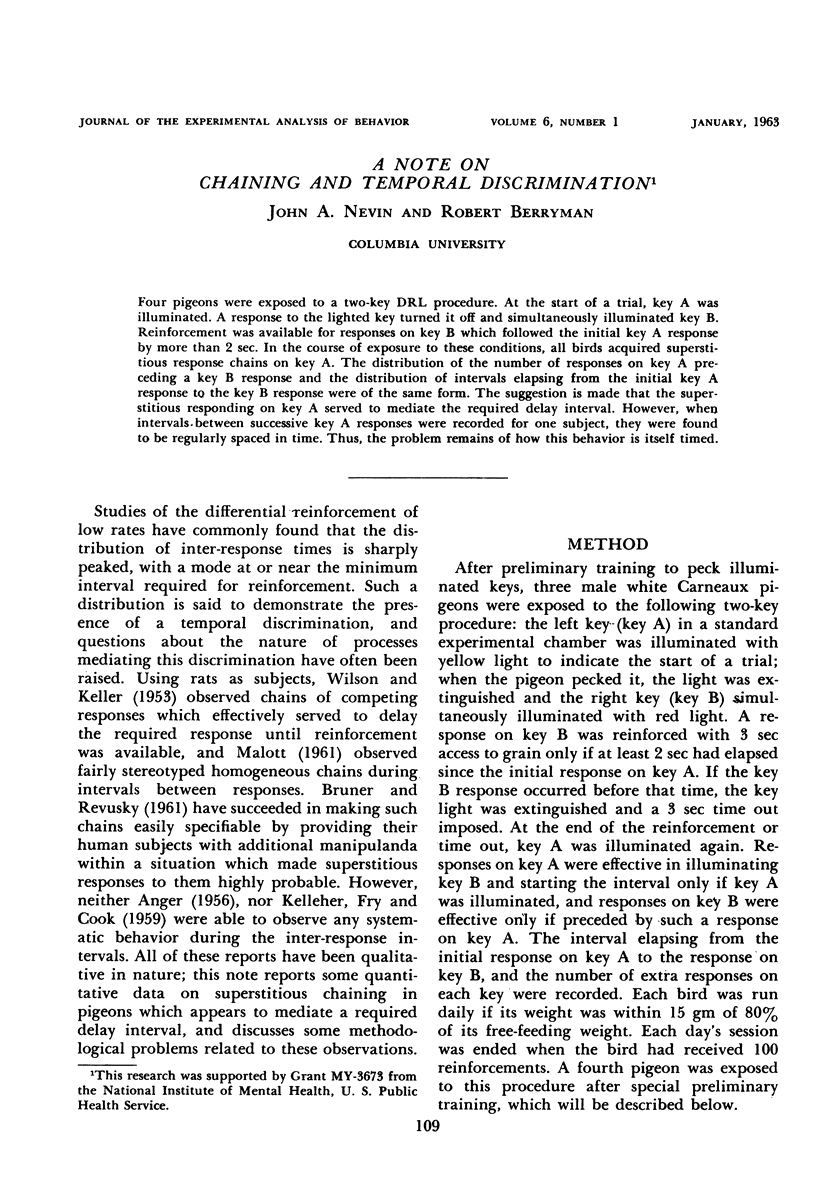
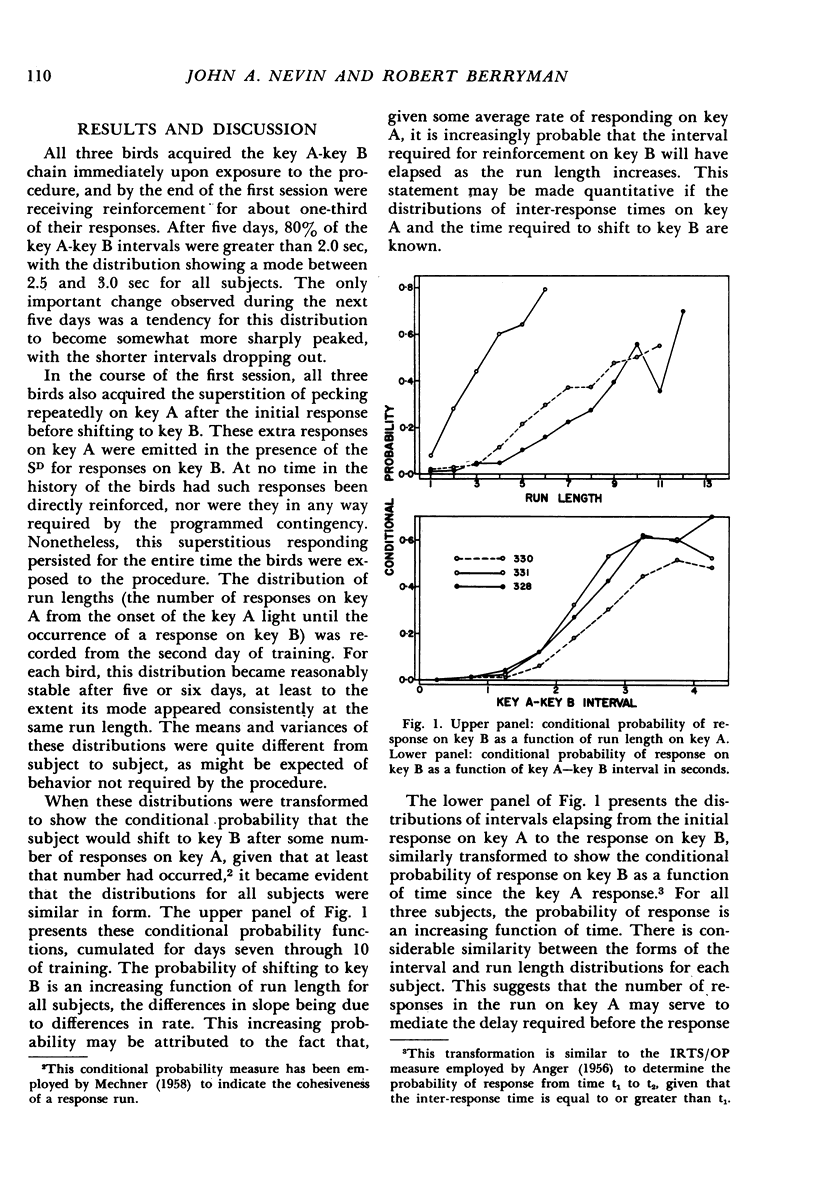
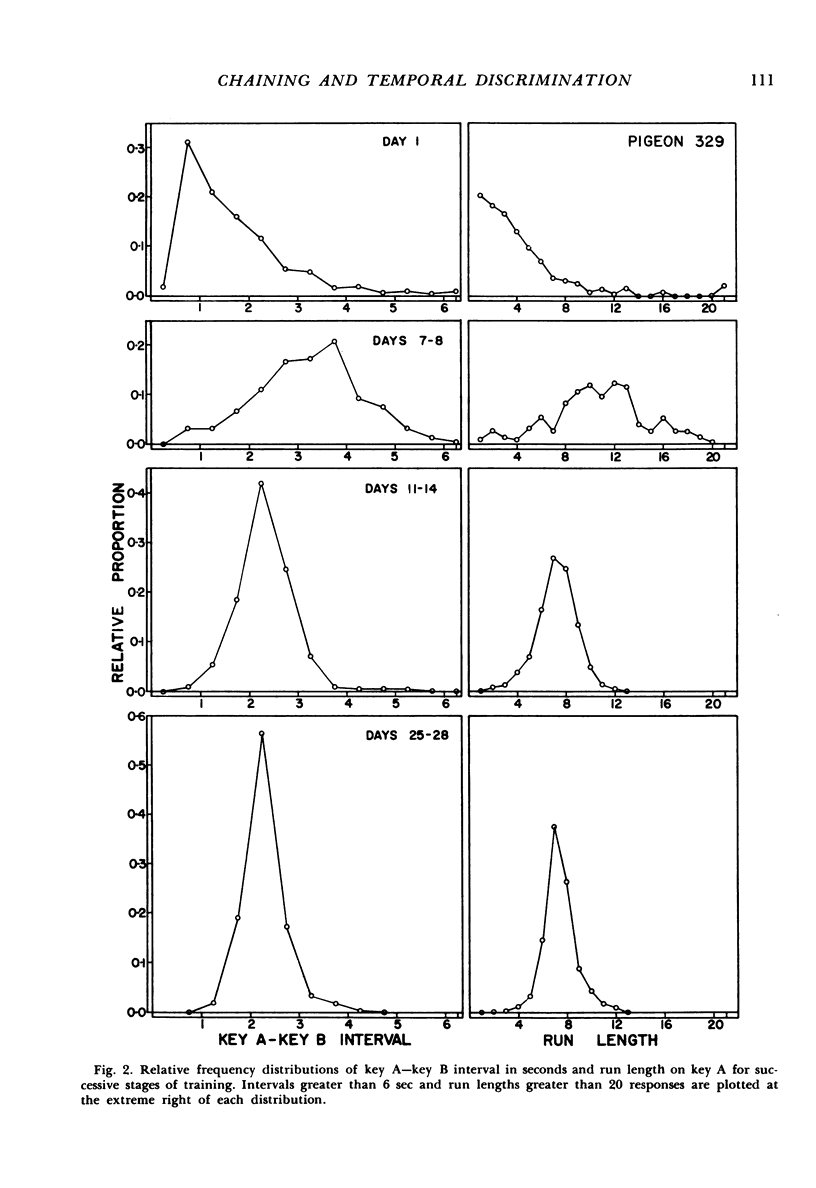
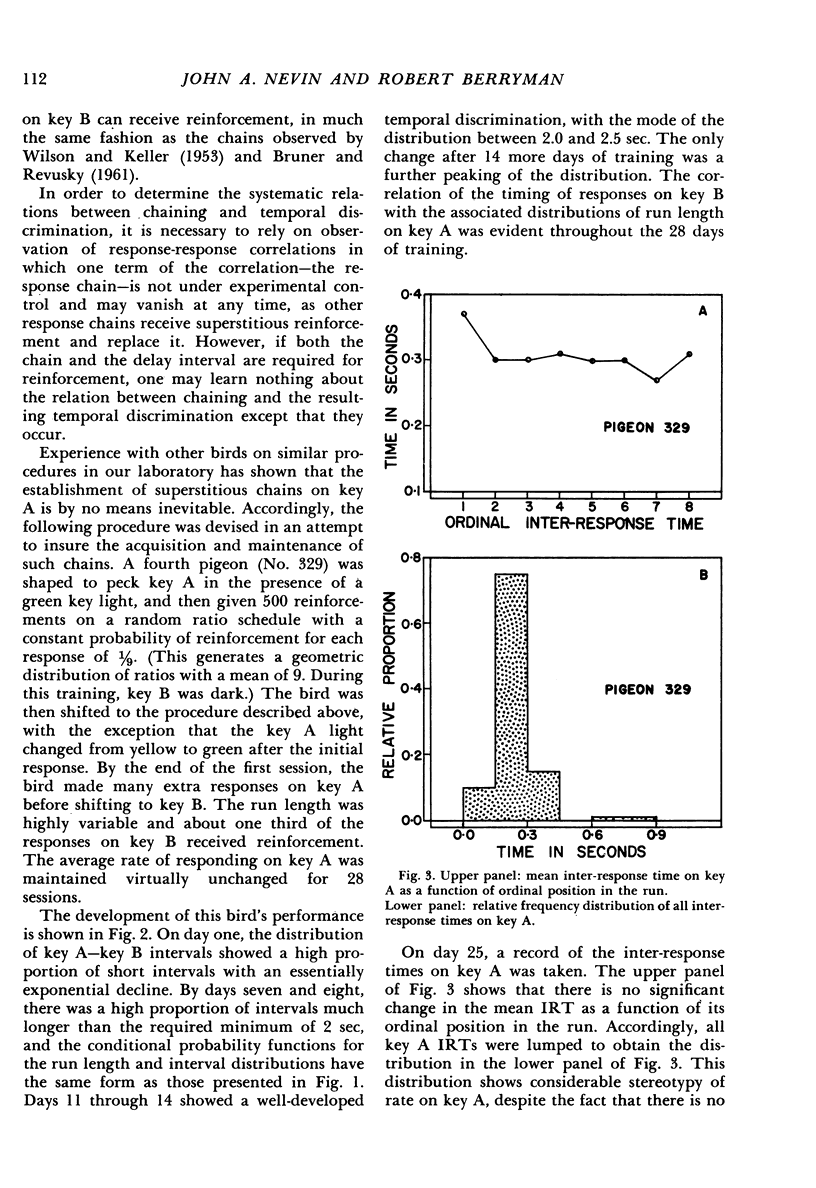
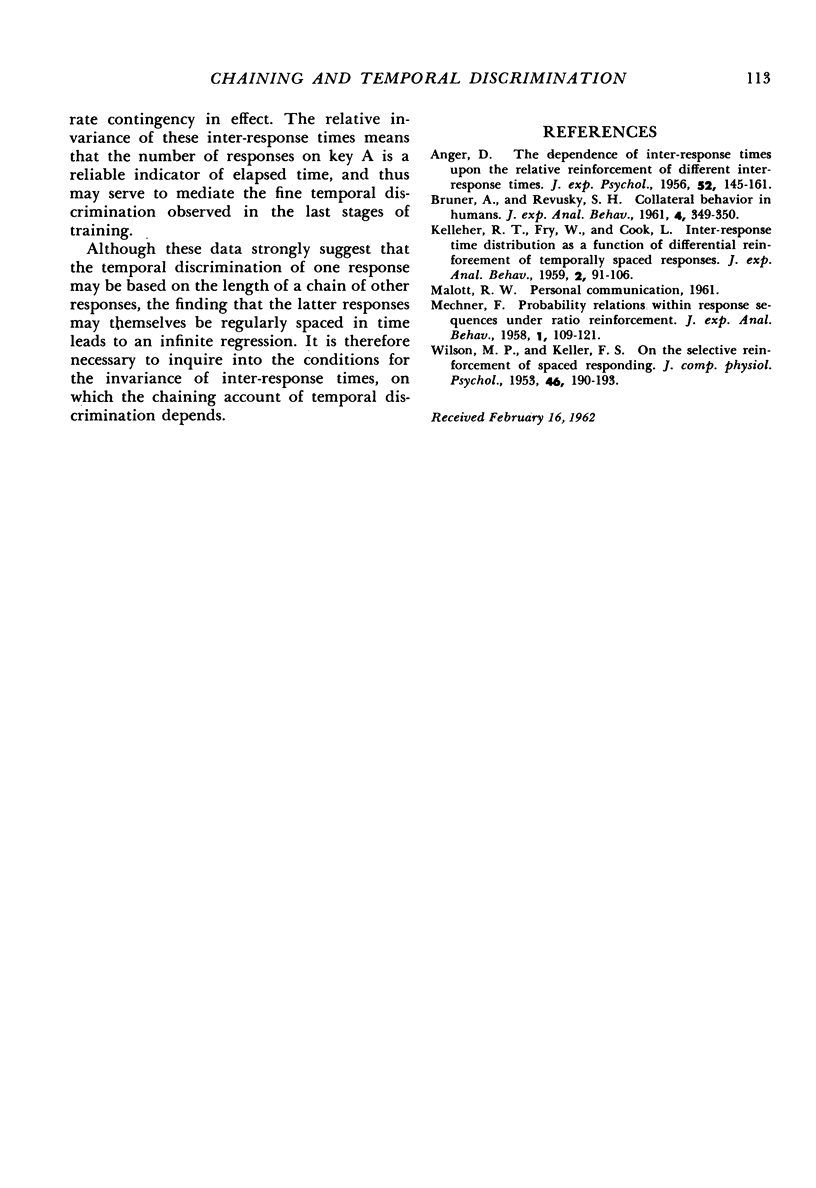
Selected References
These references are in PubMed. This may not be the complete list of references from this article.
- ANGER D. The dependence of interresponse times upon the relative reinforcement of different interresponse times. J Exp Psychol. 1956 Sep;52(3):145–161. doi: 10.1037/h0041255. [DOI] [PubMed] [Google Scholar]
- BRUNER A., REVUSKY S. H. Collateral behavior in humans. J Exp Anal Behav. 1961 Oct;4:349–350. doi: 10.1901/jeab.1961.4-349. [DOI] [PMC free article] [PubMed] [Google Scholar]
- KELLEHER R. T., FRY W., COOK L. Inter-response time distribution as a function of differential reinforcement of temporally spaced responses. J Exp Anal Behav. 1959 Apr;2:91–106. doi: 10.1901/jeab.1959.2-91. [DOI] [PMC free article] [PubMed] [Google Scholar]
- Mechner F. Probability Relations within Response Sequences under Ratio Reinforcement. J Exp Anal Behav. 1958 Apr;1(2):109–121. doi: 10.1901/jeab.1958.1-109. [DOI] [PMC free article] [PubMed] [Google Scholar]
- WILSON M. P., KELLER F. S. On the selective reinforcement of spaced responses. J Comp Physiol Psychol. 1953 Jun;46(3):190–193. doi: 10.1037/h0057705. [DOI] [PubMed] [Google Scholar]


